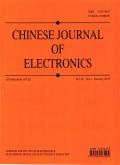用于跨媒体通信的磁闸机械天线
IF 3
4区 计算机科学
Q3 ENGINEERING, ELECTRICAL & ELECTRONIC
引用次数: 0
摘要
在低频跨媒体通信系统中,传统的机械天线存在因电机转速限制工作频率上限、波形失真、因调制方式限制传输速率等问题。因此,我们设计了一种新型磁闸式机械天线。它是基于旋转磁偶极子的辐射方程,结合磁偶极子与高导率百叶窗材料之间的相对运动原理进行设计的。依靠快门结构的旋转,球形永磁阵列的磁场被间歇性屏蔽,产生低频磁感应信号,该信号乘以电机转速。整个天线系统采用两个磁极均匀分布的球形永磁体交叉阵列,采用调频与调幅相结合的二维信号调制方式,因此在超低频段具有较高的辐射强度和传输速率。实验结果表明,当电机转速为$n$ r/s (rad /s)时,机械天线的工作频率可达4n Hz,在5 m处测得的信号幅值为50 mV,约为3.5 nT,与当前同体积的机械天线相比,其信号辐射强度更强。本文章由计算机程序翻译,如有差异,请以英文原文为准。
Magnetic Shutter Mechanical Antenna for Cross-Media Communication
In low-frequency cross-media communication systems, traditional mechanical antennas have problems such as limiting the upper limit of operating frequency due to motor speed, waveform distortion, and limiting transmission rate due to modulation methods. Thus, we have designed a new magnetic shutter type mechanical antenna. It is designed based on the radiation equation of a rotating magnetic dipole, combined with the principle of relative motion between the magnetic dipole and the high permeability shutter material. Relying upon the rotation of the shutter structure, the magnetic field of the spherical permanent magnet array is intermittently shielded, generating a low-frequency magnetic induction signal that is multiplied by the motor speed. The entire antenna system uses a cross array of spherical permanent magnets with two evenly distributed magnetic poles and a two-dimensional signal modulation method that combines frequency modulation and amplitude modulation, so it has high radiation intensity and transmission rate in the ultra-low frequency band. Experimental results show that when the motor speed is $n$ r/s (rad per second), the operating frequency of the mechanical antenna can reach 4n Hz, and the signal amplitude measured at 5 m is 50 mV, which is about 3.5 nT. Compared with the current mechanical antenna of the same volume, its signal radiation intensity is stronger.
求助全文
通过发布文献求助,成功后即可免费获取论文全文。
去求助
来源期刊

Chinese Journal of Electronics
工程技术-工程:电子与电气
CiteScore
3.70
自引率
16.70%
发文量
342
审稿时长
12.0 months
期刊介绍:
CJE focuses on the emerging fields of electronics, publishing innovative and transformative research papers. Most of the papers published in CJE are from universities and research institutes, presenting their innovative research results. Both theoretical and practical contributions are encouraged, and original research papers reporting novel solutions to the hot topics in electronics are strongly recommended.
 求助内容:
求助内容: 应助结果提醒方式:
应助结果提醒方式:


